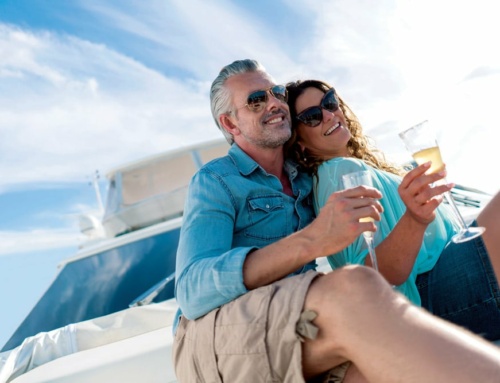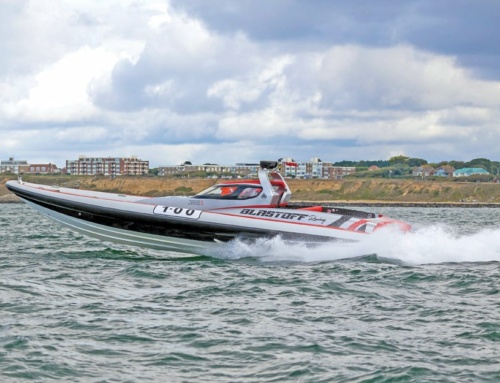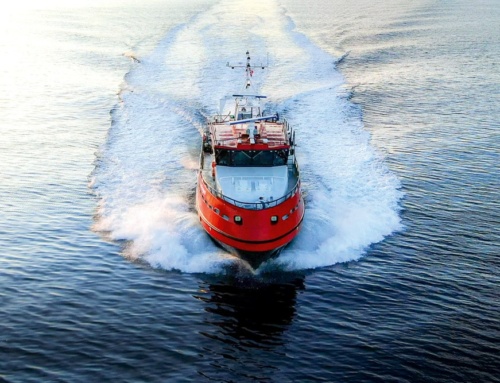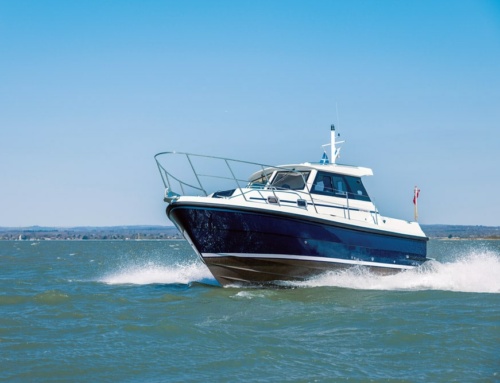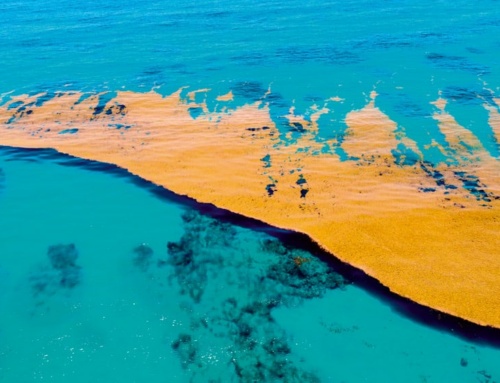HMS interviews the renowned South African naturalist and adventuring environmentalist Grant Spooner, who has many a tale to tell about his voyaging through some of the fiercest seas on the planet …
You’re a well-known figure in your native South Africa as a man of the environment, a man of the sea, a devoted naturalist and wildlife expert. When did your love for such things begin and how were they encouraged to grow?
Thanks to my family being nature, outdoors, sports and angling fanatics, from a very young age I was extremely fortunate to be introduced to all kinds of fun and exciting outdoor adventure. My dad has been an angling enthusiast his whole life. This meant I had my own fishing tackle from a very young age. As a youngster I’d spend all day every day of the holidays fishing or collecting bait in the little seaside town of Gordon’s Bay in False Bay. Both fresh- and seawater fishing meant exposure to all kinds of different wild and aquatic realms. I also grew up with a house full of everything to do with nature and wildlife. My family boasts a collection of National Geographic magazines that dates back to 1969. I would spend a lot of time adventuring through those pages of endless appreciation for the natural realm, adventure, education and fascination from around the globe.
When I was around six, on a camping trip in Namibia, I met some of SA’s foremost spider and scorpion experts, who were in a place called Ai-Ais studying the incredible and extremely venomous six-eyed sand spider. Meeting them was the start of a lifetime fascination with any and all predatory beasties, whether terrestrial, marine or aerial. From the start of high school I dedicated myself to reptiles! My youth was a wild mix of skateboarding, snakes, surfing and fishing! I was fortunate to attend a great high school in Cape Town, Rondebosch Boys High, where our interests and hobbies were encouraged and indulged. I was chairman of the Wildlife Society, committee member of the Piscatorial Society and we founded the Herpetological Society. We had our own room full of nothing but indigenous snakes – mambas, cobras, constrictors and many others.
It’s potentially a very dangerous environment you work in, whether catching deadly snakes in people’s homes to release back into the wild or going out to Dungeons Reef to observe the habits of the local great white shark population. Is danger something you thrive on?
Very interesting question! Don’t think I can say I thrive on it! Come to think of it, growing up in South Africa one is surrounded by wonderfully beautiful, wild and dangerous environments. Danger and risk are elements that can be managed by awareness, knowledge, respect and skill. By nature some of the most exhilarating experiences in life are saturated with potential dangers. That said, I believe that through a respectful and well-thought-out approach to these dangerous environments, one can develop the skills and awareness required to safely play and work in potentially life-threatening situations, accomplishing fantastic and inspiring achievements.
Often when one is in the ‘thick of it’, almost all conscious and subconscious thinking and physical sense mould into an incredible mix of efficient autonomous action and reaction, allowing the many aspects of danger ever present in these situations to be dealt with safely and efficiently. This is truly what living and experiencing life ‘in the moment’ is all about – complete focus on the here and now, with an elevated state of hyperawareness and sharpness often yielding exhilaration and achievement and progression in one’s chosen pursuits.
However, we all know the old adage: ‘If you wanna dance, you got to pay the band!’
There are so many examples of activities where human beings have harnessed the full potential of our combined physical and mental ability, intelligence and ingenuity to enable extreme pushing of the limits. Thankfully we live in a time where the combination of passion, commitment, adventure, training, education, understanding, technological science and innovation, as well as financial investment, have led to certain humans pushing all types of activities to well and truly far beyond what was previously thought of as not only dangerous, but downright deadly and impossible.
What are some of the more ‘interesting’ moments you’ve experienced as a professional wildlife expert coming into close contact with hazardous wildlife?
All things considered, I think by far the most ‘interesting’ moments I’ve experienced have been in snake rescue situations in urban environments when one has to be in very close proximity to highly agitated deadly poisonous snakes. Our Cape cobras are very mobile animals that will not hesitate to bite if antagonised or cornered. Invariably they will always choose to escape; however, we need to catch them in order to relocate them. This means handling them and manoeuvring them in sometimes very cluttered and challenging environments. I’ve pulled them out of cars, fridges, washing machines, clothes cupboards, roofs and pergolas. There’s never a dull moment when catching and releasing snakes. Thank heavens, to this day I’ve never been bitten by a venomous snake.
The closest-shave shark incident, and certainly the most widely publicised that I’ve been involved with, took place in the final heat of the 2015 WSL J-Bay Open of Surfing in Jeffreys Bay, where I was managing the event’s Water Safety Unit. During the heat, what was suspected of being a great white approached Mick Fanning at very close quarters and became entangled in his leash; a slight tussle between them ensued. I saw the encounter start while I was observing the line-up from the upper deck on Whalesong during my usual early heat line-up patrol. I noticed a substantial splash next to Mick and immediately realised what was happening. It was a very alarming scenario. I dashed downstairs to the helm. Once I’d got the boat underway and we were closing in on Mick, I distinctly remember noticing him swimming strongly, kicking both legs and swimming with both arms. This was an early indication that he had all his limbs and that maybe he’d escaped without major injury. As I closed in on the area where his board lay floating, I decided to try and scare the shark away by doing a fairly high-power turn around the area in which the shark might be. My reckoning was that 2.5 tons of boat with 300hp turning two steel props at around 4500rpm might do the trick. By then the two surfers had been picked up by our PWCs and it became apparent that Mick was completely unharmed and that we were fortunate enough to have had nothing more than a close call, with an absolutely brilliant happy ending.
How important, in your view, is maintaining a healthy fear when ‘living on the edge’ amid this wild environment, and how calculated are the risks you take?
I would say that a healthy amount of respect is absolutely critical. I believe that fear is a negative sensation, and that through knowledge and understanding of what one fears one can transform fear into respect. I believe that fear can cause us to lose control and sometimes increase the risk and danger in a dangerous environment or consequential situation. That said, we all have things we fear. I think one of life’s biggest challenges is to learn more about ourselves and the things we fear, to hopefully develop and allow ourselves to transcend our fears, and fear less and respect more.
Your preferred mode of transport or seagoing ‘workhorse’ is an 8.5m Gemini RIB. Can you tell us why you favour this type of vessel, and also provide us with some insight into its set-up and the kit she carries?
Yes, I absolutely love and cherish my Gemini WR 850, Whalesong. She is an unbelievable craft that has served me and my company brilliantly for 15 years. I fell in love with RIBs a long time ago. My introduction to these craft came in the early 90s when a friend bought a 6m Gemini Waverider powered with twin Yamaha 90s. The speed, agility, stability, loadability and seakeeping of these craft make them positively ideal for multi-purpose marine work. From this, we’ve increased the size and power of our boats as much as we can afford to. On an unforgiving coast like ours, a seaworthy workhorse that flourishes in rough water is critically important – not only that it keeps all on board safe, but also that one’s operating parameters are increased and thus, as a commercial operator, one’s earning potential is increased and optimised. My Gemini 850 is the largest legally trailerable craft for our roads, and my rig’s mobility is a huge factor in increasing our commercial functionality. I can tow my boat anywhere a client needs us. On our coast one can find a huge variety of sea conditions on any given day, and thus we always plan our sea days with an understanding of what we need to achieve in what types of sea state. Because we service the film, events and tourism industries, we have learned that these big RIBs are unequalled in versatility and performance. We design our vessels to be as versatile as possible, with a number of configuration options suited to almost any operation. Whalesong can be configured as follows:
- Open deck: Can carry up to 2500kg of cargo and equipment. We often rig camera jib arms and cranes with associated hardware for filming ops. Numerous load-rated deck nut fixings on deck allow these rigs to be safely secured in various positions forward and aft on deck.
- 14 bolster/jockey seats: Our tourism charters are based on loads of up to 12 passengers and two crew + skipper.
- Scuba cylinder rack and four jockey seats.
- 500kg ice capacity fish box/working table with four seats and bench seat aft, for offshore tuna spear fishing.
- Overhead gantry and board rack for carrying surfboards and/or slinging suspended camera rigs.
Ultimately these bolt-on/bolt-off fixtures add huge value to the boat and ensure a professional level of versatility.
Can you describe the ocean seas you encounter down here off the Cape? Give our PBR readers a flavour of this awe-inspiring environment and what it’s capable of delivering …
We are blessed to have access to such a wild, beautiful and powerful coastline flanked by two mighty oceans with a huge variety of dynamic marine environments. There is a huge variety in the types of sea states we commonly experience and work in. Commonly in any given seven-day period here one can easily experience anything from almost flat calm to strong gales, and through the winter months some huge seas with very large long-period ground swells with heights commonly in excess of 6 metres and periods up to 20 seconds.
With the big-wave surfing operations we’ve been involved with since around 2000, we’ve tracked and then witnessed some incredible storm systems approach and then batter our coast, delivering positively gargantuan seas. To date, the largest swells we’ve witnessed have reached up to 19 metres. These systems are often accompanied by 60-knot-plus winds, and obviously we don’t go to sea until the breeze has backed off. One fateful evening a bulk carrier, the Ikan Tanda, was forced aground on our western seaboard and those 19-metre swells were measured in real time by our nearby oceanographic measuring buoy. This is, after all, known as the ‘Cape of Storms’, and some winters it really does live up to its name and reputation. When the breeze backs off and the more tidy swells materialise, we’ve got a few really world-class big-wave spots to choose from, the most famous of which are Dungeons and Sunset Reefs. Most winters we welcome some very famous big-wave surfers to our shores, who hope to share in our big-wave smorgasbord!
Some years back we supplied a fleet of eight support RIBs for the Volvo Ocean Race In-Port Race, which took place in memorable conditions in Table Bay with an average wind speed of 45 knots and some gusts in excess of 55 knots. With the race fleet rounding the marks there were at least four full broaches and absolute chaos on board these wind-powered beasts. Downwind the Volvo Open 70s were making 35 knots! We were filming tracking shots with them and it was mind-boggling to witness and experience. Our 8.5m Geminis really prove themselves when it gets wild and woolly.
We are very fortunate that the Cape peninsula has many bays and there is almost always a lee shore somewhere and access to a piece of water suitable for our intents and purposes. Whenever we need to push further offshore (we are restricted to 40nm from the coast), we are understandably cautious and only proceed to sea on days with favourable forecasts. With the marvels of modern-day forecasting technology, we are able to afford clients early warnings about any inclement weather and plan our operations for areas that will be optimal. We are also fortunate to have many sheltered public launch sites and slipways from which to put to sea. This coast is one that demands the ultimate respect on all fronts, sensible decision-making, well-maintained, well-equipped seaworthy craft, good seamanship and a humble sea-respecting demeanour.
Though you traverse the seas down here in one of the most capable types of craft for its size in the world, have you ever been in a situation where you felt even you might have bitten off more than you can chew?
Sooner or later I think all seafaring folk are likely to experience situations that cause us concern and make us contemplate this very question. When we push further offshore in search of the blue-water pelagic game fish species, we unfortunately end up getting ‘caught’ every now and then when a strong breeze might develop sooner than forecast. I’ve experienced a few hairy runs back to shore – my worst run home took 4.5 hours to cover about 50nm. The other RIB (not a Gemini 😊) running with me ended up having a fuel tank break loose under the deck. In any heavier weather I try and ensure there is an adequate amount of weight further forward, sometimes carrying either ice or water as ballast – this ensures optimal performance in heavy head seas. The Waverider hulls are truly phenomenal in their runs in heavy following seas, negotiating some very deep troughs with comfort and seakeeping to spare! One of my favourite things is to ‘surf’ large swells in these big following seas, slacking off on the throttle and allowing the swell to plane the hull … Really fun! Yes, my boat is an absolute beast for its size!
When it comes to the great white shark, what myths do you consider should be dispelled and what truths should be made known?
These magnificent creatures have always been an integral part of our ocean environment here, playing their vital role among the apex predators of our bountiful marine ecology. We have grown up with them always being a reality in that we’re always conscious and aware of their potential presence whenever we enter the water – swimming, surfing, diving, etc.
I’ve always felt a profound humility about the fact that we as humans in the water are generally quite ill equipped with respect to our lack of in- and underwater senses, and the clumsy locomotion and lack of manoeuvrability when compared to many of the ocean’s more advanced creatures. We have always had to don all types of special equipment to enter their realm. Fortunately, advancements with all types of marine equipment used by humans to be more ‘at home’ in the water have enabled us to interact more and more in these marine environments more comfortably and safely. I’ve really enjoyed the progression of free-diving that has taken place globally, with the focus on minimising our impact and nurturing respect and understanding of these magnificent creatures.
The biggest myth to my mind is the theory that there are more white sharks now than ever along our coast. I believe that in the last 20 years or so there has been an exponential increase in our coastal populations, and as a result there are simply more humans in, on and around the ocean than ever before. I would think that is a very simple statistical deduction due to the radical increase in the number of ocean users. This, in my opinion, is the primary reason for the supposed increase in sightings, encounters and, most unfortunately, some attacks. The fact is that recent scientific studies and research have yielded theories that our general shark populations of smaller and larger species around the coast, and in fact globally, are under severe pressure from various human-related factors. Fortunately, in South Africa the GWS is afforded a very high protection status under our marine laws.
What are some of the greatest environmental challenges currently facing the ocean waters around the Cape?
I think the same pressures on our marine environment locally, to a greater or lesser degree, are actually prevalent on a global scale. Globally our oceans are facing some really significant threats and pressures, most of which are in some way human created or related. It is now well documented what pollution is doing to millions of creatures – whole species populations and ecosystems across the world are being very seriously affected, some on a positively calamitous scale.
Locally, to my mind, the following issues are of serious concern: rampant illegal harvesting of abalone (slow growing and slow to reproduce); rampant illegal catching of West Coast rock lobster (almost a collapsed species commercially); heavy inshore and offshore shark longlining; illegal fishing for great white sharks for jaws and body parts; large-scale trawling of various species inshore and offshore; inshore lobster and octopus trap lines causing too many whale entanglements.
As an experienced boatman and RIB operator, what advice would you give those readers of PBR wishing to broaden their own horizons or push the boundaries a little more aboard their own boats?
One should always ensure a thorough and holistic approach to boating safety. Firstly, always apply a healthy respect for the environment and possible water and weather conditions you could experience. Make every effort to understand as much as possible about the weather, sea, swell and tides for the area you plan to operate in. I believe one should always have a contingency plan in respect of any unexpected challenges that might be faced. As a boater and skipper, always embrace the ‘5 Ps’: ‘Proper Planning Prevents Poor Performance’. Strive to be self-sufficient, and try and develop self-help and self-rescue capabilities – these qualities are often a combination of skills acquired and equipment on hand.
Always have emergency services numbers for the area at hand. Always familiarise yourself with local marine VHF channels. Always have PLB/EPIRB/DSC capabilities.
Never be too bold and overconfident with regard to your craft’s capabilities and operating parameters. All machines are potentially fallible; therefore, as far as possible, understand and mitigate any of these fallibilities. That said, always apply a healthily conservative approach in understanding the combined limits of skipper and craft. Always carry out comprehensive pre-operation checks on your craft, systems and equipment. Always carry out thorough post-operation checks.
It takes many hours at sea in varied sea states and conditions to fully understand one’s craft, its capabilities and its handling qualities. I believe strongly in spending as much time as possible exploring every aspect of the craft’s performance abilities. Adopt a structured approach to exploring the throttle response and power delivery, trim optimisation for different headings in relation to sea state, steering attributes and overall performance. Ultimately one should strive to achieve a solid level of familiarity with one’s craft. I believe the ultimate objective is to achieve a level of ‘oneness’ with one’s craft. Many hours of operation at the helm will develop levels of autonomous action and response, muscle memory overlaid by acute familiarity with one’s helm station, all controls and switches. I feel strongly that only when you are confident enough that you and your craft are ready, and only then, should you look to responsibly and safely push the limits and start ‘playing’ and training in more challenging environments.
Please name your top three favourite items of personal kit you carry with you when putting to sea, the top three books you would recommend our readers bury their heads in, and from a maritime perspective, who your top three most ‘inspirational’ maritime adventurers are and why …
These items vary and are changed to suit the environment and expected weather and temperatures. I’ve only ever worked tropical and temperate seas …
Kit
Boating go bag:
- dive knife
- Icom h/held VHF
- Garmin h/held GPS plotter
- h/held compass
- FastFind PLB
- strobes
- LED Lenser head torch
- glow sticks
- assorted paracords
- CPR mask
- assorted fuses
- pencil flares
- 4 x space blankets
Personal protective equipment:
- polarised sunglasses
- hat
- full foulies
- self-inflating life jacket
Dive kit:
- Omer mask
- Da Fin short-blade fins
- 3/4 full surf wetsuit with hood
Books:
- The Tested Rules of Thumb books by John Vigor
- The Royal Naval Handbook
- Achieving the Impossible by Lewis Pugh
Heroes/role models:
- All our maritime forefathers, all the legends who explored the planet and pushed the limits with very basic technology and relatively little global oceanographic and meteorological knowledge and forecasting tech.
- Modern-day adventurer heroes: Lewis Pugh, Chris Bertish, Greg Bertish, Laird Hamilton, Mark Healey, Yvon Chouinard.
In terms of your career as a wildlife expert and environmentalist, what would you most like to achieve or be most remembered for?
Firstly, I humbly wish that when I’m older and ready to retire I can look back on my career and have achieved an exemplary level of safety through all the marine tourism, film and events operations that we run, knowing that I’d be remembered as someone who always prioritised holistic safety and remained humbly respectful of the mighty oceans and all the majestic creatures that exist in them.
I am only now starting to realise a lifelong dream. We are busy starting a corporate social enterprise aimed at the upliftment and empowerment of the youth in South Africa’s coastal communities. These communities have been disenfranchised and impoverished for many decades. We aim to harness the power of non-consumptive, sustainable environmental tourism as a vehicle to educate, empower and uplift the youth in these communities. I dream of restoring a sense of guardianship, of ownership – teaching these kids how to respect the ocean, play in the ocean, fall in love with the ocean. Once a true love for the ocean is realised, then these kids will learn to care for and cherish the environment in which they live. I long to teach them how to harvest and forage responsibly and sustainably; how to earn a living working on and in the sea responsibly and sustainably; how to fight the scourge of pollution.
A simple programme would include the following: learn to swim, surf, snorkel then scuba dive, to row, sail, then operate powerboats, to fish and forage, sustainable and responsible commercial fishing – a programme aimed at producing responsible, proficient and well-rounded coastal citizens who can become very employable within the broad marine sector.


